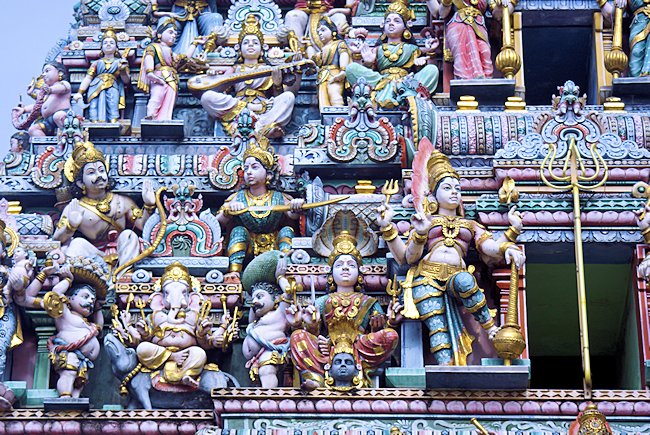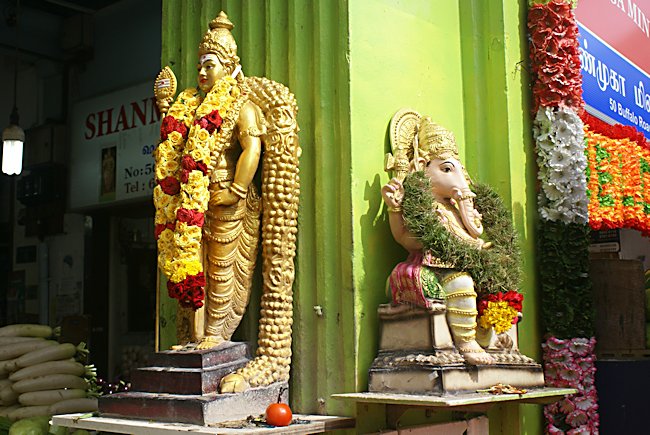Guide to Singapore's Hindu Temples
Most of Singapore's Hindu temples are of South Indian descent. Many Indians in Singapore are Tamil refugees from the war in Sri Lanka. It therefore is not surprising that the Hindu temples in Sri Lanka adopt the architectural style of South Indian temples.

For Hindus, a circle is not a perfect shape because it implies motion. The square is the perfect shape. This is why Hindu temples are always constructed on the a square ground plan.
There are many extremely complex rules governing the siting design and building of each Hindu temple based on astronomy, astrology and religious law. Each temple is dedicated to a particular God in the vast Hindu pantheon of deities. Because Hinduism has so many festivals and religious rights, there always seems to be something happening.
You know you are near a Hindu temple, when you see the distinctive elaboratly decorated brightly coloured gopuram roof of the main entrance. Once you go through the entrance. The first square room you come to is the mandapa. This is the Hall of worship and in many cases full of columns. Most temples have a connecting Hall to the sanctum. This is called a antarala or vestibule. The Temple sanctum is quite often small and dark. It is normally off-limits to everyone except temple priests. It is called the garbhargrha.

Most Hindu temples have statues of the Hindu deity to whom the temple is dedicated. This is the presiding deity, but other minor deities minor gods will also appear in statuette form if they are associated with the main character. But some temples are dedicated to more than one God, and therefore will have lots of different statues and shrines inside the temple walls.
In front of each shrine there is a space to put a tray upon which the faithful place offerings. When you enter a Hindu temple look for a bell on the front door some doors are covered in Bell's. The bells should be run as you enter the temple. Hindu worshippers will bring symbolic offerings to place in front of shrines. These offerings include items like sweets flowers or fruits.
Most temples are surrounded by stores that sell products that can be used as an offering. This is why you will see attractive necklaces made of flowers hanging in the front of local shops. Devotees may not be able to personally present their offerings at the feet of the deity they are praying to.
They give them to the priest. Many worshippers apply a holy red mark on to their forehead to symbolise receiving a blessing. Worshippers walk clockwise around the innermost sanctum stopping at each wall to pray. The priest may sprinkle water on them to symbolise a holy water from the Ganges River.
As a non-Hindu visitor to a temple. You will be expected to remove your shoes and if you are wearing shorts, you may be required to put on a wrap around your waist to reduce the amount of exposed flesh. If you have children with you. Be careful what they look at some of the statues are quite gruesome. In Little India one of the statues shows a deity with a human laying over its lap with its stomach cut open and the deity is eating the entrails.
Travel books

